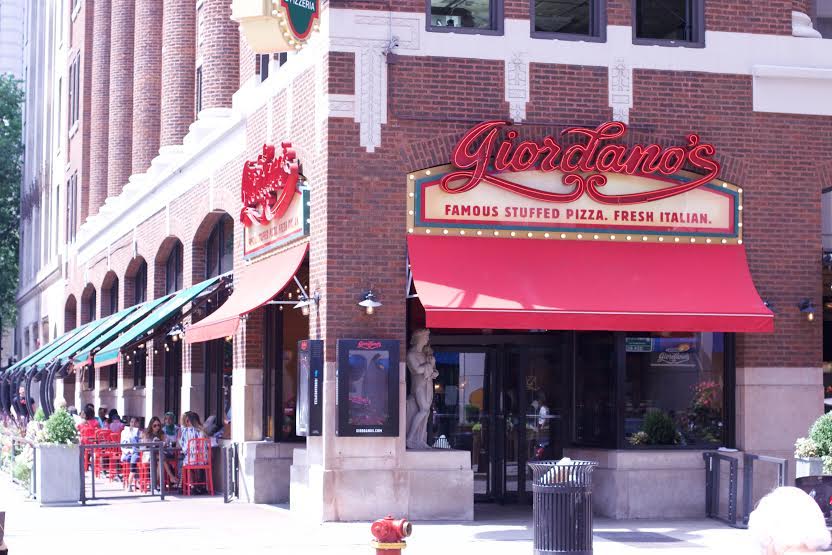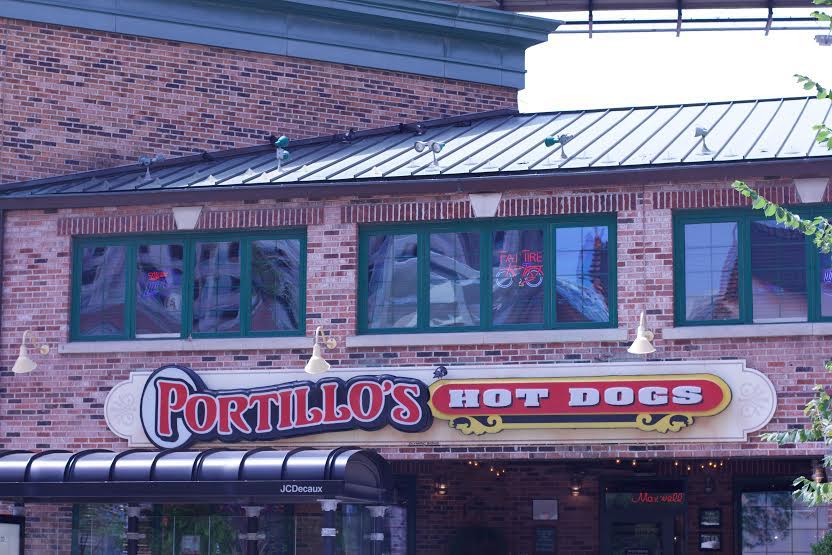When brothers Efren and Joseph Boglio opened Giordano ‘ s on Chicago’s South Side in 1974 to serve the stuffed deep dish pizzas they grew up on in Torino, Italy, they had modest ambitions.
“It was a small mom and pop business that was no different than the others being opened by people who were immigrating to Chicago at the time,” says Giordano’s President and CEO Yorgo Koutsogiorgas.
Though the restaurant slowly gained traction in the neighborhood, it wasn’t until three years later that it rose to city-wide fame. In March 1977 the restaurant was voted as having the city’s “Best Pizza” in a survey conducted by C hicago Magazine’s food editors and readers, landing those stuffed pies on the cover of the prominent publication. “You can imagine the enormous impact it had at that time,” says Koutsogiorgas.
“Overnight these two simple men from Italy became known across the city, and from that moment on, the demand for the pizza and for more restaurants in other neighborhoods boomed.”
 Photo by Nicole Schnitzler
Photo by Nicole Schnitzler
For Dairy Queen , which opened its first store in Joliet, Illinois in 1940, it was a different kind of impetus that sparked sudden growth. While there were fewer than 10 locations of the ice cream shop in 1945, that number grew to 100 in 1947, 1,446 in 1950, and 2,600 in 1955.
“The major uptick was due to men and women coming home from World War II and looking for business opportunities,” says Director of Communications Dean Peters. “The DQ system provided these individuals with a chance to own and run their own business and serve their customers a one-of-a-kind product that was very unique at that time.”
The number of Dairy Queens has only skyrocketed since, landing the iconic ice cream shop in 49 of 50 states and in more than 25 countries. For Peters, that growth brings with it big bonuses, with brand recognition being paramount. “Whenever I’m traveling and happen to be wearing a Dairy Queen shirt, I almost always encounter two things: a smile and a story,” he says, referencing conversations with strangers over memories of their very first dipped cone or Blizzard.
It’s a recognition that Peters credits to the opportunities that come with being a large company, including the budgets for areas like marketing, public relations, and media buys.
“We struggled with recognition when we had only a few stores 75 years ago, but when you’re able to grow and have a national and international presence, you of course have more fans who can enjoy and interact with your product—and that’s a wonderful opportunity to have.”
To ensure success in new markets, strategic placement is everything. For Portillo’ s , a Chicago staple known for its Windy City-style hot dogs and Italian beef, it boils down to three key factors.
“A lot of people will ask, ‘how do we get a Portillo’s to come to us?’ and we keep track of those requests because it’s great if you can open shop where your fans already are,” says Vice President of Marketing Nick Scarpino. “We also can see where our products are shipped to most frequently, and if you do well in shipments you can figure you’ll sell food with a restaurant there, too.”
The last aspect they consider? Cities rich in fellow and former Chicagoans.
“We look at demographics, and we look for markets with a high density of people who are formerly from the Chicagoland area who have heard of us,” explains Scarpino, who notes Scottsdale and Tempe, Arizona, as examples.
 Photo by Nicole Schnitzler
Photo by Nicole Schnitzler
Sometimes the choice expansion cities aren’t so much saturated with Second City citizens as they are close to them. When Giordano’s put together their growth plan they opted to test out other Midwest markets first. “These markets—Indiana, Ohio, Michigan, Wisconsin—made the most sense to us because they have a lot in common with Illinois in terms of shared experiences in a Midwestern atmosphere,” says Koutsogiorgas. Still, he notes how important it is for Giordano’s to be recognized as being Chicago’s, first and foremost.
“We don’t hide our pride when we go to other markets because Chicago is a world class city of food, culture, arts, and architecture,” he says. “People look up to this city for those reasons, and we’re very proud to be a part of that.”
Love Chicago classics? Us too. Luckily, you can get your fill this fall at Taste Talks Chicago, curated by Chef Jason Hammel— tickets are on sale now !










